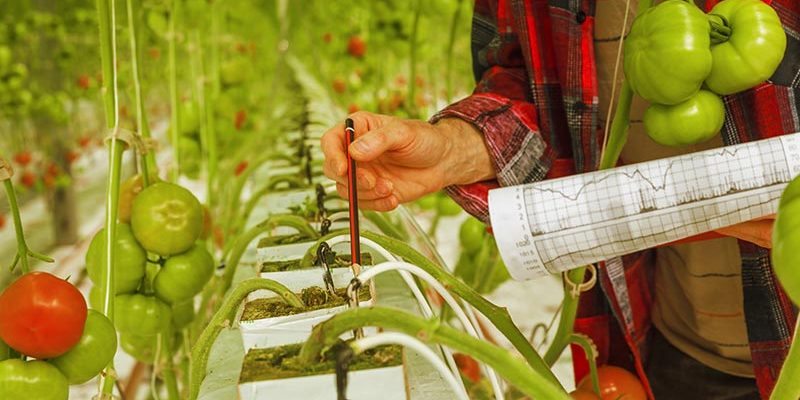
Diagnostics… Why Do You Care?
Diagnostics… What does it mean to you? How much value do you put in it? The meaning of diagnostics and what it represents means a whole lot to many growers, then on the other hand, seems to mean nothing.
Usually if we get something diagnosed and a report back, we are now at another crossroads that we must address. Do you go make a change (go left or right) with the diagnosis, or do you ignore it and keep going straight?
How much is the crop(s) worth that we’re talking about? You did the initial step with the diagnosis, so why not follow up and do the next? We do this with a lot of things in our lives. We take our cars/trucks in for maintenance and most of the time get a report back with additional things that need attention. Do we ignore the additional problems thinking they’ll go away? We’ve all heard the phrase, “Pay now or pay more later.”
So let’s say you decide to ignore the diagnosis you received from the lab on your disease issue because of cost and you end up throwing the crop away. Can you do this on the next crop?
You take your car in for an oil change, and you find out you need brakes as well. Oil change is around $20, plus brake shoes and you’re looking at around $250 (depending on vehicle). So you decide to pass on the brake job. Next thing since you decided to go straight on the road and some time has passed, now you’re looking at not only brake shoes but replacing the rotors, which might cost you $500+ (again depending on vehicle). How much would you rather pay? I understand the cash is not always in the bank, but it should be in your operating budget.
Why should anyone wait for an accurate disease diagnosis? Although I will admit that no one ever asked me (Ann) this question, I know many were wondering why I was making such a big deal out of getting the diagnosis before we talked about control.
The most important reason is that choice of the best control strategies, including pesticides, cannot or at least should not be made in the dark. If the correct controls are not chosen, the disease will not be controlled with the obvious loss in the number of salable plants, plant quality, bench space, fertilizer, water, pesticides and labor. Each of these losses translates directly into increased expense to produce that crop. And we all know that you cannot charge more because it cost you more to produce the product.
If you are not sure what caused the disease and you apply a pesticide that does not work, you have acted irresponsibly and can blame no one but yourself if the crop is damaged or lost.
I am often confronted with a situation where the grower has gotten a diagnosis (or guessed) and used treatment that might have worked but not the most effective products. The grower
is then understandably frustrated. Even when the diagnosis is correct, deciding the best things to do may be tough. That is why I always want to know what they have done already. I hate to suggest something that they have tried that isn’t working, or something impractical for the specific situation.
It is pretty hard to find a control strategy with the wrong diagnosis. Start by keeping records of what you are doing, changes made in how the crop is being grown and finally consider sending a sample to a lab. Often the shortest way to solve a problem is to admit you don’t know what is wrong right away and involve an expert or two.
The Future
It is not much of a stretch to see we are all headed down the electronic highway at full tilt. Diagnostics will all be remote via hand-held cameras (or more likely “phones”) that will be immediately uploaded to tools on the web that will identify the problem, check previous successful control strategies and determine what to do and real costs in real time.
There will still be a wide range of growing environments from the completely uncontrolled to the completely controlled — the spread from one end of the other will increase. We will never be able to replace all handling with monitoring since plants and their environment are fluid and not under our control in many instances.
New plants will be thoroughly understood with respect to all characteristics — even pest and disease sensitivity. Controlling plant pests will be more specific and less toxic overall. We may even have selective products built right into the plants that will assist them in resisting pests and diseases. This is possible now, except for the cost which will continue to decrease until even ornamental plants will be altered economically.
It will also be easy to diagnose problems using very specific, inexpensive diagnostic tools based on molecular methods we are already using.
Gardening (outdoors and indoors) will remain very important as we have less and less physical activity as our world becomes more artificial. I am glad I will be retired by then!
Chase Agricultural Consulting, LLC was formed at the end of 2011 when Ann (A.R.) Chase and Mike Zemke moved to Arizona. Ann has more than 35 years experience in research, diagnostics and practical consulting in plant pathology. She has been retired from the University of Florida – Mid Florida Research and Education Center in Apopka since 1994, but remains on staff as a Professor Emeritus. Mike holds an Associate of Applied Science in manufacturing drafting. Mike started his education in horticulture when he and Ann were married in 1995. He specializes in communications of all sorts within the industry.


 Video Library
Video Library 




















